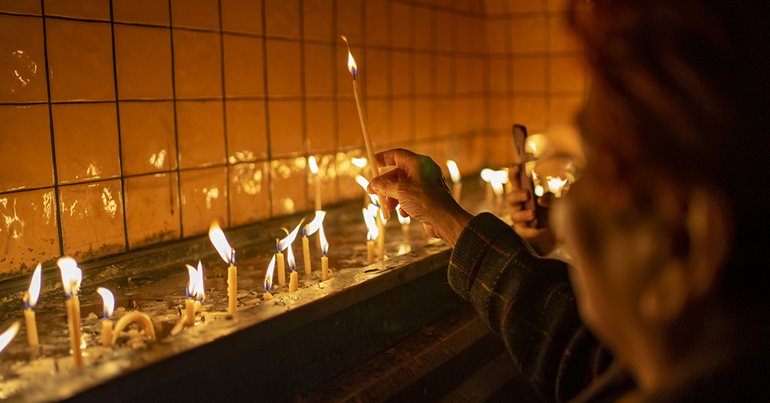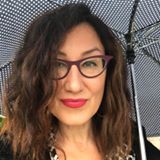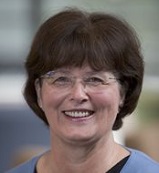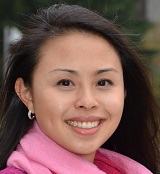
By N.L. Sweeney
In many cultures around the world, death and dying are taboo topics that people ardently avoid. At the University of Washington Bothell, however, Kari Lerum, an associate professor in the School of Interdisciplinary Arts & Sciences, is challenging her students to take a closer look at these difficult subjects.
In her course Death Rituals, students examine death as it interacts with grief, cross- cultural traditions, new green-death technologies, the death industry and their own beliefs and associations around death. Overall, Lerum hopes students develop a deeper comfort in talking about grief, death and ritual as well as a better understanding of the death industry.
“This class has opened up so many conversations I otherwise might not have had with students,” said Lerum. “Some of our classes and office hours have been emotional, but this space and this course have also been restorative.”
The birth of the course

The idea for this course began in 2009 when Lerum’s 35-year-old sister-in-law was diagnosed with a terminal disease. “I was thrown for a loop,” said Lerum. “I make sense of things by investigating them, so one way I dealt with this heartbreak was to take a deep dive into cross-cultural literature and research around grief, death and ritual.”
After her sister-in-law died in 2017, Lerum felt she needed to share her insights and information with other people. When Lerum envisioned the Death Rituals course, she knew she wanted to approach the topic from interdisciplinary and multicultural perspectives, so she created a syllabus that incorporated a diverse range of experts and material on the topic of death. With the summer quarter course set to go online because of the pandemic, Lerum worked to make the same resources available remotely. In-class visits became guest Zoom lectures. A visit to a mortuary turned into a virtual tour.
“I’ve been extremely impressed with how well Kari was able to make this course into an online one,” said Ray Lindquist, a graduate student in the Master of Arts and Cultural Studies program (2021). “She has done an excellent job of making the course feel accessible and interesting.”
Filling in the blanks
Death Rituals is first and foremost an interdisciplinary course. “While I am well equipped to speak about death from cultural studies and critical theoretical perspectives, I am less adept at issues pertaining to thanatology, such as clinical psychology, nursing, hospice and mortuary work,” she said. “So, I’ve brought in experts in these areas to round out my course.”
Lindquist appreciated what the guest lecturers have added to the class experience. “With these experts present,” Lindquist said, “we’ve been able to put names and faces to the people who deal with death and dying every day. These are people you might encounter walking down the street and speaking with them has dug out some of the inherent ‘spookiness’ of death.”
The first guest Lerum brought to the class was Lillian Chen, a counselor in the Counseling Center at UW Bothell, who was excited about the opportunity this course represents. “In various countries or societies, including our own, there is a sense of taboo around the topic of death,” said Chen. “This often prevents people from coming to terms with death or talking about it openly.”

Bonnie Blachly, a lecturer in the School of Nursing & Health Studies and a nurse, spoke to the class about her work as an end-of-life doula — someone who helps guide a client through the process of dying. Other guests have included heads of crematoriums and funeral homes, including the director of the People’s Memorial Association, a local nonprofit organization and community partner for the class.
“Teaching in the School of IAS at UW Bothell has been perfect for courses like this one,” said Lerum. “Our culture in IAS encourages this sort of melding together the best of different disciplines and community partners. This has allowed me to bring in multiple angles to a very complex issue.”
Inequalities of death
Teaching death rituals during the coronavirus pandemic and during the current racial justice movement has provided unexpected urgency to the course.
“People are generally in a state of grief right now,” Lerum said. “Because we are processing public deaths like George Floyd’s and living during a global pandemic, it’s more important than ever that we learn how to have conversations about death.”
With her students, Lerum explores necropolitics, or the politics of life and death. “It’s important to consider how inequality and oppression — by race, class, gender expression and more — impact how and when people die,” she said.
By addressing these disparities, Lerum invites students to imagine the systems needed for all people to have vibrant lives and good deaths. “When we acknowledge the ways that minoritized people die and the importance of how they die, we are amplifying the importance of the lives they’ve lived.”
Lerum believes that by using models like the Death Positive Movement, a frame of thought that advocates open communication about death, students will be able to engage around issues that are otherwise silenced because they are taboo. “COVID-19 and Black Lives Matter have both served as means to reckon with our ethical obligations when it comes to death,” she said. “This moment in history is a big wake-up call for reassessing how we think about both death and life.”
Starting conversations

While this course can be heavy at times, Lerum believes that talking about death openly and from multiple perspectives is a liberating experience. Many of the students have articulated an appreciation for how this course has given them the opportunity to engage with a range of topics related to death.
“The worst thing a person can do is suffer in grief and not have support,” said Chen. “When people are able to talk about loss, it normalizes the grief process, which allows people to more honestly communicate about death and dying.”
Rather than be a gloomy experience, said Lerum, this course has reinforced her passion for teaching this topic. “I feel really alive when I teach this course.”



